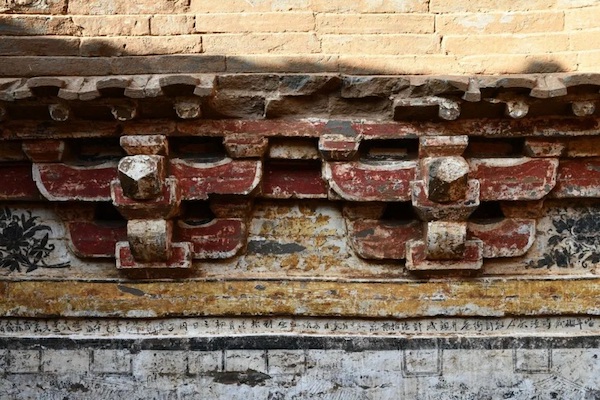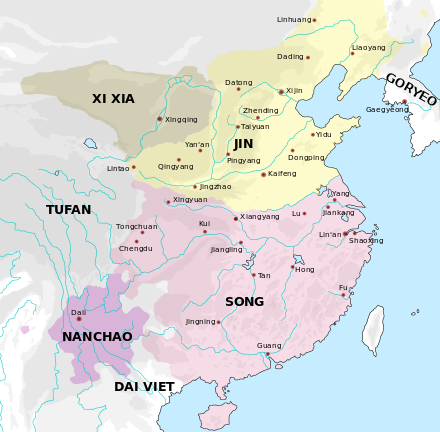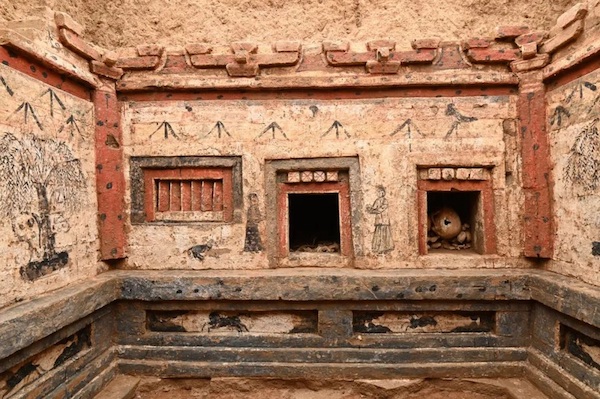In Shanxi province, southwest of Beijing, archaeologists have uncovered three burial chambers dating back to the Jin dynasty (晉, 265-420), according to an article published in the China Daily newspaper on March 13.
We learn that in November 2023, archaeologists from the Institute and the Changzhi City Archaeological Research Institute carried out excavations in the village of Qiangcheng, in the city’s Lucheng district, where they found the three ancient tombs.
A few historical details to help us understand China
These tombs date back to the Jurchen Jin – or “Great Jin” – dynasty, which reigned in northern China between 1115 and 1234.
What the article in this Chinese newspaper doesn’t tell us, however, is that the Jurchen Jin rulers (in Chinese 女真 and in Manchu ᠵᡠᡧᡝᠨ) were not ethnic Han, the dominant ethnic group in today’s China. They were a semi-nomadic people from northeast China. Thus, even in scientific articles such as this just-published report on archaeology, a form of misinformation, to say the least, is constantly percolating in Chinese society, controlled by the iron fist of the Communist Party. In other words, it’s called negationism. For the sake of folklore, and very often for propaganda aimed at foreigners, the 56 different ethnic nationalities are put forward in their folkloric aspect alone, insofar as they are not in head-on opposition to Beijing’s policy, but it is always the Hans who dominate (and the word is weak) the whole political set-up. For example, there is no mention of the disastrous fate reserved for the Uighurs, the Turkic-speaking people of Sin Kiang, who were martyred and now find themselves, to top it all, at a population disadvantage in their own country as a result of the massive transfers of Hans who came to colonize their territory!
The history of China is, without a doubt, a great history, and Chinese civilization is extremely rich. But it is not quite the official history of the country, the one taught in schools where the red flag flies with its yellow stars and the sickle and hammer …
The history of art cannot be dealt with serenely if we do not first consider the history of the men and women who make up society, who make up humanity, hence our asides in WUKALI.
Indeed, China’s multi-millennial history is the fruit of centuries of conquest, internecine warfare, domination, invasion, great misery, famine, dynasties and emperors, power, strength, wealth, trade with the West, influence, artistic refinement, culture and decline. A complicated imperium of multiple absorptions and centrifugal dynamics, dominating a large number of territories and ethnic groups, with a contrasting geography where vast desert lands challenge rice paddies. And while Confucianism was able to develop, enabling the emergence of elites, it also mechanically contributed to destroying the social and philosophical realization of the individual. Individual freedom and emancipation, as we in the West understand them in our Judeo-Christian tradition, have never existed there, not even in the time of an “Enlightenment”, and it’s certainly not the current political regime of Xí Jìnpíng, which corsets the Chinese population, that will change things. Confucianism has been diluted by Communist totalitarianism.
Besides, when it comes to territory, Beijing’s claim to Taiwan is quite simply a political sham, a manipulation, an expression of propaganda for internal use and of the kind of conquering, imperialist nationalism that, alas, flourishes today. Above all, and let’s be perfectly analytical, it’s Beijing’s imperial (and of course unspoken) desire to control the deep seas currently under Taipei’s control, for a warlike adventurism which, if successful, would have incalculable consequences. It is also, and this is fundamental, the bellicose threat posed by China to the very existence of Taiwan’s small democracy, to the freedom, to the lives, yes, of its inhabitants. China, like Putin’s Russia which with the war in Ukraine has become Beijing’s obligatory customer, is not a country, it’s an empire.
Un seul être me manque et tout est dépeuplé1, like French poet, Alphonse de Lamartine, would have said. In a country that today has over 1 billion 400 million inhabitants! In the words of a Westerner, is this really so?
The Jin Dynasty (1115-1234) reigned over an empire formed by the Tungus Juchen (or Jurchen) tribes of Manchuria. The empire covered a large part of Inner Asia and all of present-day North China.


Initially subjects of the Liao, an Inner Asian dynasty created in the 10th century by the Khitan tribes, the Juchen, with the help of China’s Song dynasty, threw off their overlords and established their own dynasty between 1115 and 1122. They then attacked the Song and drove them south of the Huai River. Like the Liao, they set up a system of dual administration: a Chinese-style bureaucracy to rule the southern part of their conquests, and a tribal state to control the nomadic tribes of inland Asia. Their capital was Huining 会宁府 until 1152,(in today’s Heilongjiang province and whose provincial capital was Harbin) then Yanjing 燕京 (today’s Beijing) and finally Bianjing (Kaifeng 开封市 in Henan province)( Excerpt from: Britannica) .
Most of their kingdom was in China proper, but the Juchen were keen to preserve their ethnic identity. To this end, they continued to use their own alphabet and language, and banished Chinese dress and customs from their armies, although they chose the Chinese name of Jin for their dynasty. However, their warlike ferocity gradually disappeared, and the dynasty was finally destroyed in 1234, when it was caught in the middle of a newly-formed alliance between the Mongols to the north and the Song to the south.

Chinese archaeologists have noted in their observations that, although the tombs were more or less looted and damaged, they were relatively well preserved, with murals, decorations, inscriptions and epitaphs.
Interestingly, although they belong to the same period and region, the tombs display distinct characteristics and styles.
For example, the walls of tombs M19 and M20 are adorned with arches, doors, windows, figures and floral motifs carved into the brickwork, as well as inscriptions detailing information about the tombs, such as period, characters, events, history and geography.
Tomb M21 presents a totally contrasting style. The walls of its chamber also imitate wooden structures, but the flora, fauna and painted colors are markedly different from the other two, leaving archaeologists further room for interpretation.
According to the institute, the tomb epitaphs and inscriptions add material and historical examples to the study of Jin dynasty tombs in the northern region.
As the China Daily article says: “The tombs reflect traditional Chinese culture, social ethics, ancient architectural features, tomb architecture and funerary customs, providing new materials and perspectives for the study of ancient tomb culture and archaeological history….“. Couldn’t be better said!
You’ll find this text in its original French version, just click on the French flag up page or here
Would you like to react to this editorial or even write in WUKALI
Don’t hesitate, contact us


